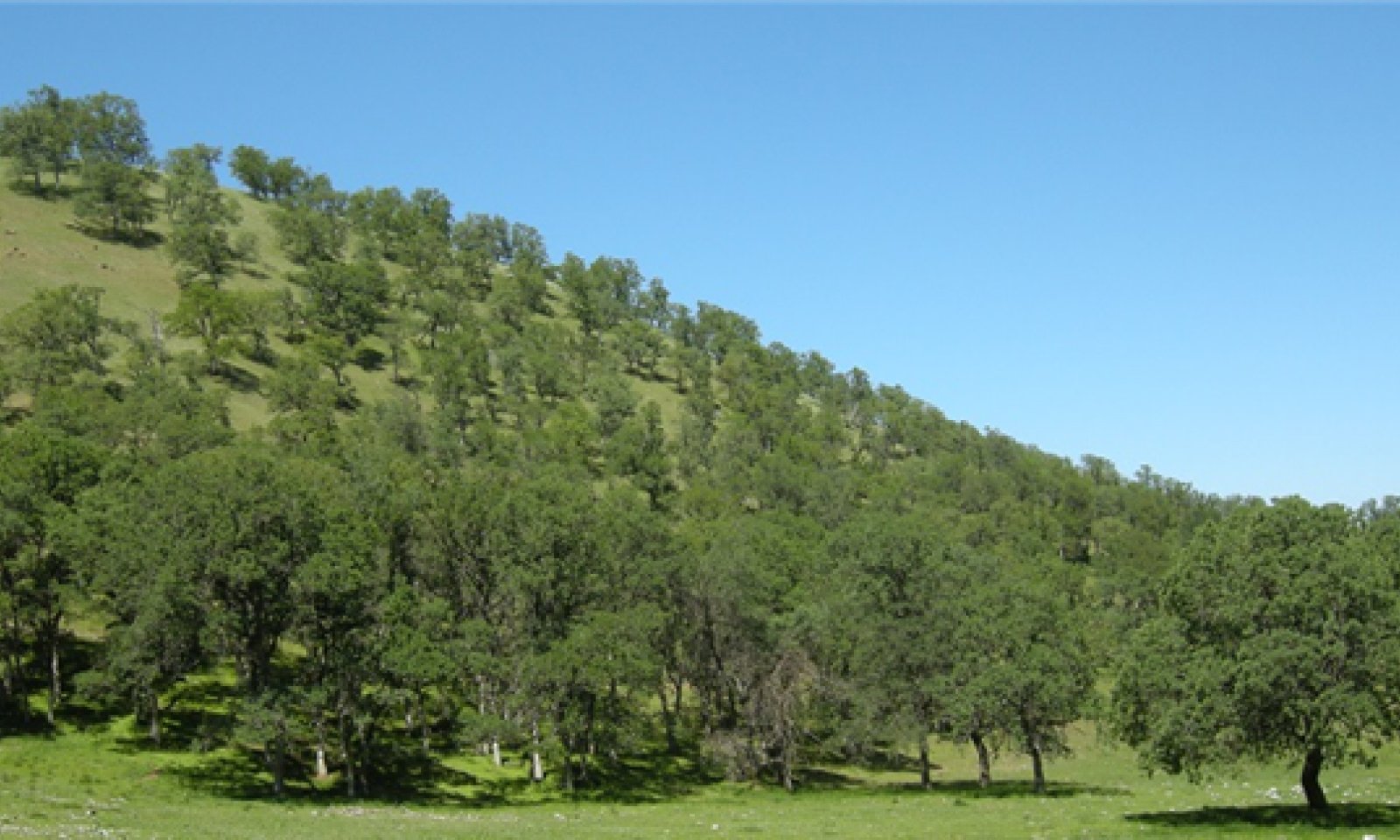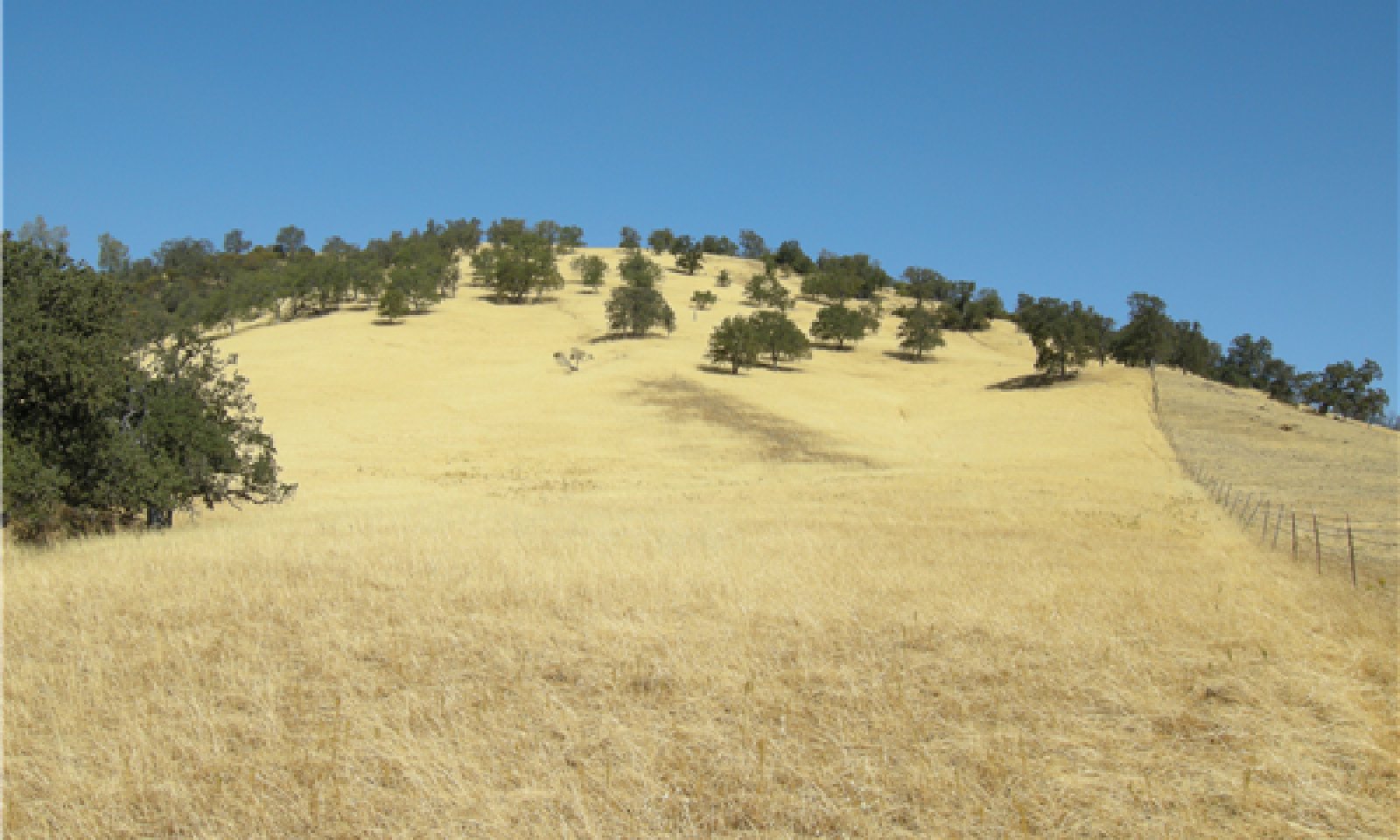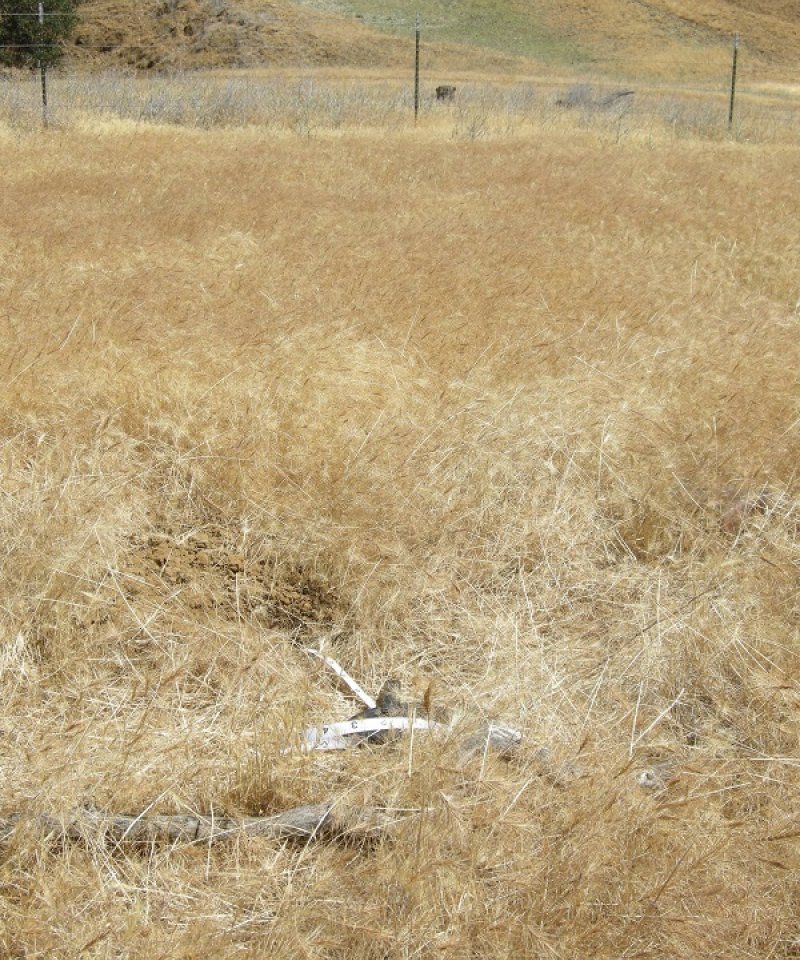
Clayey Foothills
Scenario model
Current ecosystem state
Select a state
Management practices/drivers
Select a transition or restoration pathway
- Transition T1A More details
- Restoration pathway R2A More details
- Transition T2A More details
- Restoration pathway R3A More details
-
No transition or restoration pathway between the selected states has been described
Target ecosystem state
Select a state
State 1
Reference State




Description
The Reference State represents the natural range of variability for this ecological site. Periodic drought, grazing, clearing and fire are the most dominant disturbances influencing this site. States and Community Phases included in this document include those previously recognized by Fire and Resource Assessment Program (FRAP, State of California, 1998) and other entities, as a result of the use of ordination software and professional consensus (Allen-Diaz et al., 1989; Vayssieres and Plant, 1998; George et al., 1993).
The reference state has two community phases: 1) Blue oak//Annual Grasses Phase: The lower elevations of this site tends to be grass and blue oak dominated. 2) Blue oak//Whiteleaf manzanita//Wild oat: With increasing elevation and slope tree and shrub density increases.
Oaks help retain more water on site than grasslands (Baldocchi et al., 2007) and enhance soil quality through nutrient cycling, organic matter deposition and reduced soil bulk density (Dalgren et al., 2003). Blue oak contributes to soil productivity by increasing soil nutrition under trees through the continuous cycling of nutrients to the soil surface and their slow release by microbial decomposition (O’Geen et al., 2010). This recycling of nutrients provides an energy source to microbes, insects and other plants present on the site, increasing its productivity. As a result, soil and herbaceous vegetation under oak canopies have higher nitrogen and carbon resources than adjacent grasslands and appear to increase rates of soil nitrogen turnover, as well as increased rates of microbial activity (Herman et al., 2003). Trees increase the soil water holding capacity of savanna soils (Baldocchi et al., 2004). Soils under oaks retain water into the early summer months as ground temperatures are moderated by shading. Findings from this study also indicated that oak savannas retain and store more energy than grasslands, due to lower reflectance and surface temperatures. This state is relatively stable unless tree removal occurs. Research indicates that oak removal results in a rapid decline in soil quality, including a loss in soil organic matter and nitrogen through leaching (Dalgren et al., 2003; Herman et al., 2003; ucanr.edu, 2007).
The duration of vegetation successional stages varies greatly, and is lacking detailed study, but it is estimated by some authors to take at least 50 years (Mayer and Laudenslayer, 1988). Early growth of oak is slow and then more rapid up to the age of 40 years. Most stands of blue oak range from 80 to 100 years of age (Kertis et al., 1993). Remnant older blue oak specimens found in more remote or steep locations may range up to 450 years of age (Stahle et al., 2013). Mature brush development can take 10 to 15 years.
Blue oak and manzanita provide important breeding and foraging habitat during the winter and spring and their acorns and berries provide a vital food source for birds and mammals.
Submodel
State 2
Annual Grassland State



Description
Today species composition and productivity of the annual dominated understory grasses and forbs vary greatly within and between years and is greatly influenced by the timing and amount of precipitation and the amount of residual dry matter (George et al., 2001a; Conner, 1991). Residual mulch influences and impacts germination and organic matter (George et al., 1985).
Lower footslope positions may support more grasses than trees in some areas of heavy clay accumulations, as increased soil cracking may destroy woody roots restricting shrub or tree growth (Stromberg et al., 2007). This cracking affects dynamic soil properties by allowing for initial rapid water infiltration that decreases rapidly after soil wetting; permeability is thereafter slow and runoff is medium to very high, increasing the potential for erosion.
Nutrient turnover is rapid in grassland systems and is lost via leaching, gaseous exchange and soil erosion (Stromberg et al., 2007; ucan.edu, 2014). Because most of the nitrate that accumulates during the summer and fall is moved to seeds at senescence and the remainder is removed via rains prior to initiation of growth, little is available for later absorption by growing plants. Annual systems with shallow root systems dry out quickly with rapid spring growth and evapotranspiration quickly depletes soil moisture (ucan.edu, 2014).
Submodel
State 3
Noxious Weed-Dominated State



Description
The two dominant invasive species that occur in this state (Cal-IPC List 1A) include medusahead (Taeniatherum caput-medusae) and yellow star-thistle (Centaurea solstitialis). These plants are commonly found in greater abundance in the lower footslope positions due to the clayey nature of the soils; though they are also found on backslopes but are not nearly as common. Italian plumeless thistle (Carduus pychnocephalus, Cal-IPC list 2C) may also be found in limited populations but is not as extensive as the other above-mentioned species.
The California Invasive Plant Council (Cal IPC http://www.cal-ipc.org/) maintains an invasive plant inventory that rates invasive plants based on their ecological impacts to native flora and fauna. The California Department of Food and Agriculture (CDFA) also maintain a list of "noxious weeds" that are subject to regulation or quarantine by county agricultural departments.
Some experts have suggested that medusahead and other invasive species may gradually adapt to new sites (Rice et al., 2006).
Submodel
Mechanism
Triggers that limit blue oak reproduction and or survival (intensive prolonged grazing) in combination with tree removal (severe fire, clearing or type conversion), or prolonged drought resulting in tree mortality could put this community phase at risk, eventually reaching a threshold (T1A) where it becomes an annual grassland state (State 2). Reduction of oak canopy below 20 percent could result in a reduction in oak regeneration and survival (FRAP, State of California, 1998); natural regeneration seldom occurs further away than 100 feet from an existing tree canopy and stump sprouting is not likely in mature trees in a low rainfall area. Blue oak seedlings may be less adapted to drought conditions, affecting their growth and survival (Grünzweig et al., 2008). As older trees die and there are no seedling replacements, the lack of seedlings could lead to conversion to savanna to pasture (Baldocchi, 2004). One study (McCreary et al., 2008) found sprout survival 19 years following harvest was 28 percent and noted that sprouting would be expected to decline with any subsequent harvest.
Removal of blue oaks has been found to reduce soil productivity due to decreased soil nutrition from tree litter (Dalgren et al., 2003), and increase the potential for erosion due to a decline in soil porosity and increased bulk density from organic matter losses (Dalgren et al., 1997). Erosion losses also may reduce productivity by changing the water-holding capacity of the soil and the thickness of the root zone (Elliot et al., 1998). Removal of trees or other vegetation may change the hydrology of an area, increasing runoff and reducing infiltration. Slope stability and erosion were increased after removal of stabilizing vegetation on steep slopes. Burning also increased sedimentation rates following conversion from oaks to grassland (Dahlgren et al., 2001).
Mechanism
Natural regeneration of blue oaks may be limited on some drier sites and because of a number of factors that limit seed germination, seedling establishment and survival to the tree stage. Competition for soil moisture from the understory annual plants, acorn and seedling damage by rodents, livestock grazing and changed fire regimes are important factors that can reduce blue oak regeneration. Oak restoration can be difficult and expensive but limited success may be achieved through planting acorns or seedlings and protecting existing young seedlings or saplings. Regeneration studies conducted at the University of California Sierra Foothill Research and Extension Center (SFREC) were successful on rocky clay loam soils, however, average rainfall is lower on this ecological site (19-24 inches) than in the study area (28 inches), and supplemental irrigation may be necessary (McCreary, 2001), limiting this treatment to areas accessible by road. Young oak seedlings are especially susceptible to mortality during the early years. One study indicates blue oak seedlings that reach 10 years of age are more likely to survive compared to newly germinated seedlings (Philips et al., 2007). Protection of saplings from grazing pressure utilizing tree shelters (McCreary and George, 2005) or exclosures (Philips et al., 2007) has been shown to be an effective management technique to aid survival and accelerate growth of young seedlings.
On this ecological site, the lower slopes may have more favorable moisture conditions and options for accessibility, however on most of the deeper soils associated with this ecological site appear to acceptable levels of oak regeneration and survival taking place.
McCreary (2001) provides an extensive review of oak regeneration problems and practices on California’s oak woodlands.
Mechanism
Various triggers (disturbances) that reduce site resilience lead to an increased potential for medusahead invasion and expansion include a lack of grazing and an absence of fire. A nearly continuous canopy of medusahead and a build-up of litter (high in silica) will exclude most other herbaceous species. A lack of grazing and absence of fire insures the dominance of medusahead. Triggers for yellow star-thistle invasion include disturbances such as intense grazing, poorly timed mowing, and rooting by feral pigs (DiTomaso et al, 2007). In areas with reduced plant cover and an increase in bare ground, opportunities are provided for invasion of noxious weeds like yellow star-thistle. The lower footslope positions with a deeper soil profile and higher clay accumulations are especially at-risk for a transition to a noxious weed state.
These conditions could result in this community phase reaching a threshold (T2A) where it becomes a noxious weed-dominated state.
Mechanism
Although there are no known restorations efforts completed on this ecological site, studies indicate restoration may be expensive to implement and is generally reserved for the most productive land with easy access. Use of an integrated approach for control of noxious species is the most effective way to prevent one species from dominating and to improve range forage and productivity.
Medusahead density may be controlled through a variety of measures, including grazing, mowing, burning and chemical treatments. Targeting the treatment to the plant life stage is an important factor in the reduction of invasive species (Di’Tomaso et al., 2007). Control activities are most effective in late spring; if the seed and foliage of medusahead is removed or killed before seeds mature, it does not have resources to recover (Kyser et al., 2014). Thatch control via grazing, mechanical means or burning is also important to assist in germination of desirable species. When utilizing prescribed burning careful timing is essential as burning following seed dispersal is largely ineffectual (DiTomaso and Johnson (eds.) 2006); burning before seed dehiscence is one of the most effective controls, with emphasis on exposing inflorescences to direct flame (Kyser et al., 2014). Caution should be exercised when utilizing prescribed fire, as it will also scarify yellow star-thistle seeds and enhance their germination. A chemical treatment is necessary as a follow-up treatment to burning if yellow star-thistle is present (pers. com., Gustafson). A comprehensive review of the use of fire and other control methods of medusahead has been prepared by Kyser and others (2014).
Timing of control should closely follow flower initiation to prevent seed production (DiTomaso et al., 2006). Controlled grazing and the application of herbicides in a variety of studies acted to reduce populations of yellow star-thistle (DiTomaso et al., 2007). Chemical treatment early in the season was more effective in its control. Repeated burning has reduced the incidence of yellow star thistle in other studies. Several consecutive years of burning are required for control of yellow star-thistle (DiTomaso and Johnson (eds.), 2006). Burning should be utilized the first and possibly the second year with follow-up chemical treatment for best control (DiTomaso et al., 2007). Increasing the density of competing grasses or legumes through planting in combination with fertilization could aid in the control of this species (California Rangelands, UCD). A combination of weed control techniques can be effective in control of yellow star-thistle; several years are required to deplete the seed bank and establish competitive vegetation with subsequent monitoring to prevent re-infestation (DiTomaso et al., 2007).
Revegetation with native species, especially perennials has been successful in some areas. Low nitrogen levels limit medusahead growth, and may allow for improved growth of perennials (Kyser et al., 2014). Reseeding with natives is expensive and is mostly reserved for the most productive lands.
Model keys
Briefcase
Add ecological sites and Major Land Resource Areas to your briefcase by clicking on the briefcase (![]() ) icon wherever it occurs. Drag and drop items to reorder. Cookies are used to store briefcase items between browsing sessions. Because of this, the number of items that can be added to your briefcase is limited, and briefcase items added on one device and browser cannot be accessed from another device or browser. Users who do not wish to place cookies on their devices should not use the briefcase tool. Briefcase cookies serve no other purpose than described here and are deleted whenever browsing history is cleared.
) icon wherever it occurs. Drag and drop items to reorder. Cookies are used to store briefcase items between browsing sessions. Because of this, the number of items that can be added to your briefcase is limited, and briefcase items added on one device and browser cannot be accessed from another device or browser. Users who do not wish to place cookies on their devices should not use the briefcase tool. Briefcase cookies serve no other purpose than described here and are deleted whenever browsing history is cleared.
Ecological sites
Major Land Resource Areas
The Ecosystem Dynamics Interpretive Tool is an information system framework developed by the USDA-ARS Jornada Experimental Range, USDA Natural Resources Conservation Service, and New Mexico State University.


